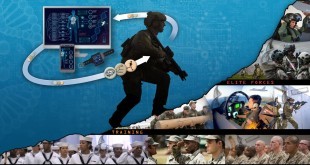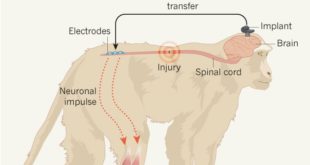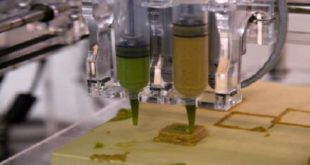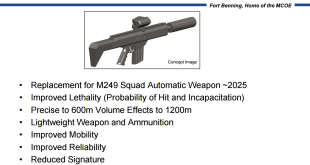The Defense Advanced Research Projects Agency launched a program helping the Department of Defense sustain and reinforce U.S. military readiness through the study of warfighter biology. The Measuring Biological Aptitude program seeks to understand biological processes and factors that could affect the performance of specialized military roles, according to DARPA. Service …
Read More »DARPA’s BG+ is mitigating spinal cord injury of wounded warfighter, promoting healing in the battlefield
In November of 2016 Nature reported that the results of experiments in Beijing, in which a wireless brain implant — that stimulates electrodes in the leg by recreating signals recorded from the brain — has enabled monkeys with spinal-cord injuries to walk. “They have demonstrated that the animals can regain …
Read More »DARPA’s INI developing AI algorithms of BCIs that allow troops to control unmanned systems using their brains.
Recent progress in central and peripheral neural interface technology has resulted in impressive capability demonstrations. These include the use of neural signals to control the reanimation of paralyzed muscles or to control high-dimensional prosthetic limbs, external robots, and even flight simulators. In many of these examples, sensory feedback from the …
Read More »DARPA BETR plans a bioelectronic interface for Intelligent Healing for Soldier’s wounds through dynamic, adaptive, and precise human therapies
Nowhere is prompt and effective medical treatment more important than on the battlefield, where injuries are severe and conditions dangerous. Soldiers are vulnerable to many injuries on the battlefield, the most common combat wounds include: Blast wounds caused by landmines, grenades, IEDs (improvised explosive devices), and suicide bombings where the …
Read More »New food technologies to enhance soldier perfomance for success in military operations.
With nutritional status being central to success in battle, food technology has long been considered an enabler for military operations. Food technology has been instrumental in ensuring that troops remain “fit to fight”. Early military leaders realised that how well their men were fed played a crucial role in success …
Read More »DARPA calls for Neurological and Internal Organ Regeneration Biotechnology for wounded warriors
Some parts of our bodies can repair themselves quite well after injury, but others don’t repair at all. We certainly can’t regrow a whole leg or arm, but some animals CAN regrow – or regenerate – whole body parts. So what can we learn from these regenerative animals? Regeneration means …
Read More »US Army developing next generation small arms including Squad Automatic Rifle capable of accurately defeating current and future threats
The U.S. Army is currently evaluating a new small arms systems that could give their warfighters a serious edge, including squad weapon and sniper rifle. The Army is rolling along on multiple fronts in the small arms department, ranging from area weapons to those with a little more precision- to put …
Read More »Next Robot revolution are robots with smart skin that can touch and feel
Robots have already become an indispensable part of our lives. Robots have revolutionized auto manufacturing, making plants safer and products more reliable — and reducing the number of people involved in the process. However, even inside a modern auto plant, robots have not been able to replace the human touch …
Read More »Augmented reality displays moving towards smart contact lenses to enable vision of invisible computing
Smart glasses refer to wearable computing devices that add information to what the user sees. These devices function in a way similar to mobile phones and tablets and have the ability of processing and implementing various programs and applications. A majority of the smart glasses currently used in the market …
Read More »Advances in AI Assistants enabling US army to develop cognitive agents helping Soldiers Deal with Information Overload
Virtual assistants are the cutting edge of end user interaction, thanks to endless set of capabilities across multiple services. Today, we can ask virtual assistants like Amazon Alexa, Apple’s Siri, Google Now to perform simple tasks like, “What’s the weather”, “Remind me to take pills in the morning”, etc. in …
Read More » International Defense Security & Technology Your trusted Source for News, Research and Analysis
International Defense Security & Technology Your trusted Source for News, Research and Analysis








